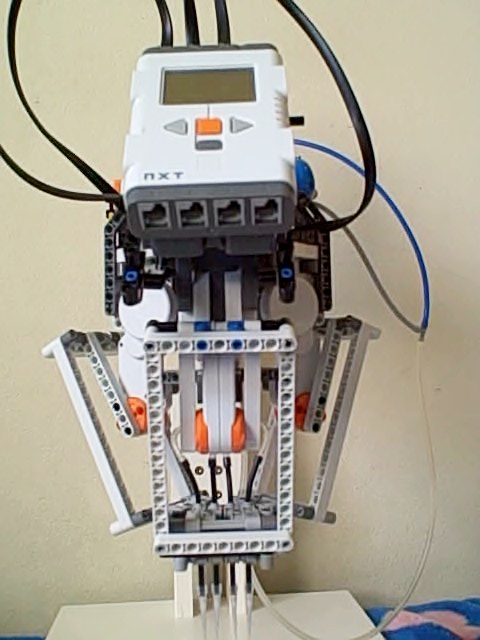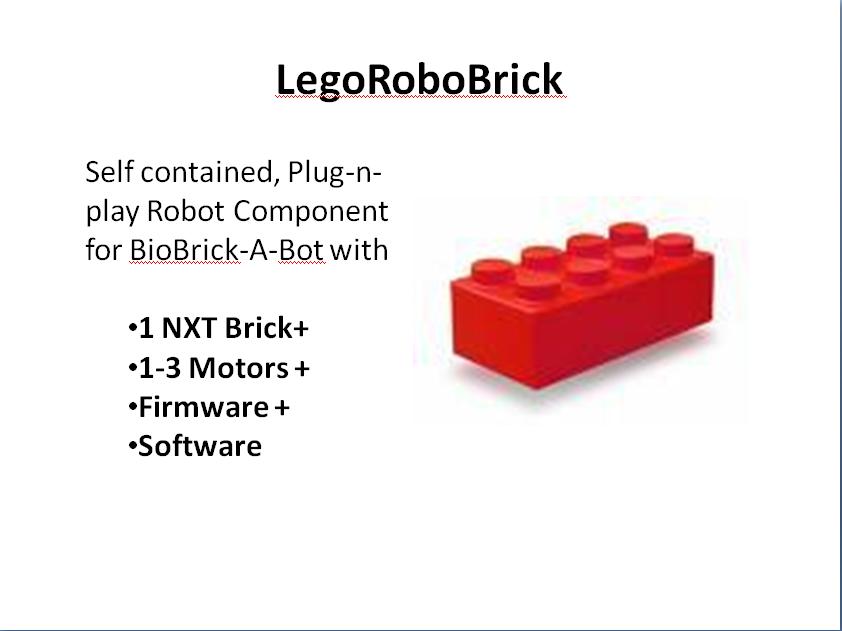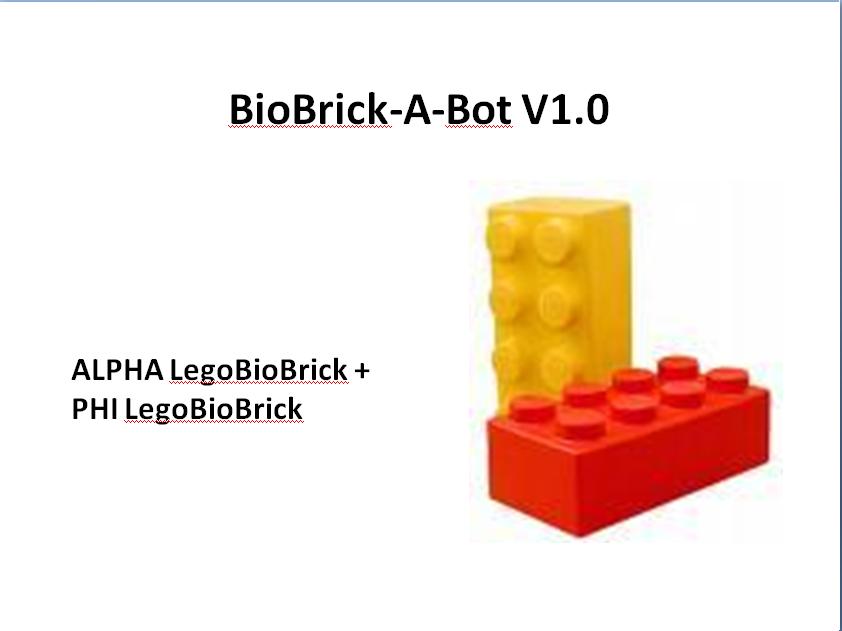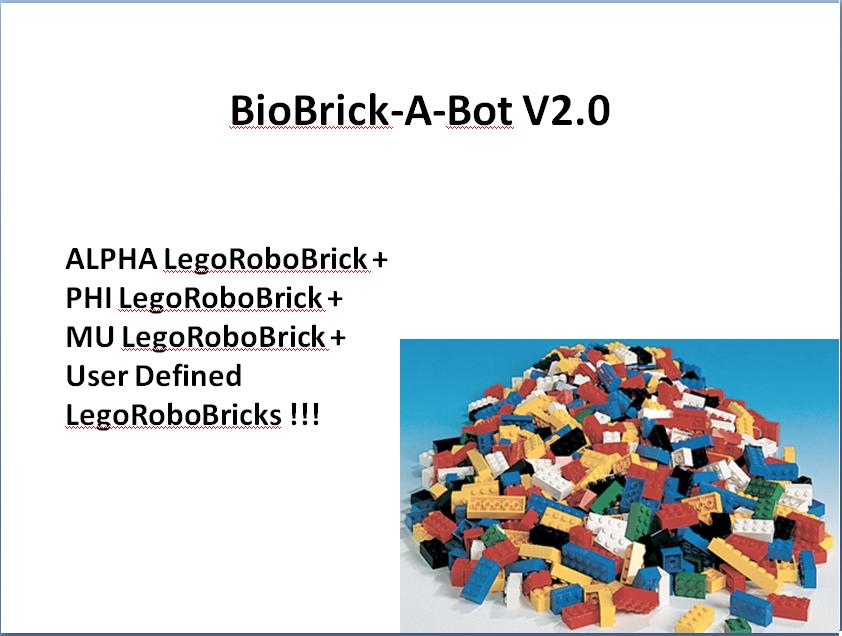|
|
| (117 intermediate revisions not shown) |
| Line 1: |
Line 1: |
| - | <!-- *** What falls between these lines is the Alert Box! You can remove it from your pages once you have read and understood the alert *** -->
| + | {{:Team:Washington-Software/Header|in}} |
| | | | |
| - | <html> | + | <h2> Abstract </h2> |
| - | <div id="box" style="width: 700px; margin-left: 137px; padding: 5px; border: 3px solid #000; background-color: #fe2b33;">
| + | |
| - | <div id="template" style="text-align: center; font-weight: bold; font-size: large; color: #f6f6f6; padding: 5px;">
| + | |
| - | This is a template page. READ THESE INSTRUCTIONS.
| + | |
| - | </div>
| + | |
| - | <div id="instructions" style="text-align: center; font-weight: normal; font-size: small; color: #f6f6f6; padding: 5px;">
| + | |
| - | You are provided with this team page template with which to start the iGEM season. You may choose to personalize it to fit your team but keep the same "look." Or you may choose to take your team wiki to a different level and design your own wiki. You can find some examples <a href="https://2009.igem.org/Help:Template/Examples">HERE</a>.
| + | |
| - | </div>
| + | |
| - | <div id="warning" style="text-align: center; font-weight: bold; font-size: small; color: #f6f6f6; padding: 5px;">
| + | |
| - | You <strong>MUST</strong> have a team description page, a project abstract, a complete project description, and a lab notebook. PLEASE keep all of your pages within your teams namespace.
| + | |
| - | </div>
| + | |
| - | </div>
| + | |
| - | </html> | + | |
| | | | |
| - | <!-- *** End of the alert box *** --> | + | <h4>'''BioBrick-A-Bot: Lego Robot for Automated BioBrick DNA Assembly'''</h4> |
| | + | [[Image:Robot Close Up.jpg|thumb|right|'''BioBrick-A-Bot''']] |
| | | | |
| | + | Commercial Liquid Handling Systems are extremely expensive, and are typically beyond the reach of the average molecular biologist interested in performing high throughput methods. To address this problem, we design and implement a liquid handling system built from commonly accessible Legos. Our goal is the automation of BioBrick assembly on a platform that can itself be easily replicated and we demonstrate a proof-of-principle for this system by transferring colored dye solutions on a 96-well plate. We introduce a new concept called LegoRoboBrick. The liquid handling system is build from 3 new LegoRoboBrick modular components: ALPHA (Automated Lego Pipette Head Assembly), BETA (BioBrick Environmental Testing Apparatus), and PHI (Pneumatic Handling Interface). We will demonstrate that the same BioBrick assembly software can run on multiple plug-and-play LegoRoboBrick instances with different physical dimensions and geometric configurations. The modular design of LegoRoboBricks allows easy extension of new laboratory functionalities in the future. |
| | | | |
| | + | <h2> Project Goals </h2> |
| | + | #Low Cost – Robot cost significantly lower than $10,000, the price of a commercial liquid handling robot. (Actual cost of BioBrick-a-Bot prototype: ~$700) |
| | + | #Hardware Platform that is easily accessible. |
| | + | #Hardware Design that is easily replicable by other iGEM teams. |
| | + | #Software Design that is robust, plug and play. Can swap modules from other iGEM teams. |
| | + | #Design that is easily extensible, to allow future collaboration with other iGEM teams. |
| | | | |
| - | {|align="justify"
| + | <h2> The Vision </h2> |
| - | |You can write a background of your team here. Give us a background of your team, the members, etc. Or tell us more about something of your choosing.
| + | |
| - | |[[Image:Example_logo.png|200px|right|frame]]
| + | |
| - | |-
| + | |
| - | |
| + | |
| - | ''Tell us more about your project. Give us background. Use this is the abstract of your project. Be descriptive but concise (1-2 paragraphs)''
| + | |
| - | |[[Image:Team.png|right|frame|Your team picture]]
| + | |
| - | |-
| + | |
| - | |
| + | |
| - | |align="center"|[[Team:Washington-Software | Team Example]]
| + | |
| - | |}
| + | |
| | | | |
| - | <!--- The Mission, Experiments --->
| + | [[Image:LegoRoboBrick.jpg|315px|left]][[Image:LegoRoboBrick2.jpg|315px|left]][[Image:LegoRoboBricks.jpg|313px|right]] |
| | | | |
| - | {| style="color:#1b2c8a;background-color:#0c6;" cellpadding="3" cellspacing="1" border="1" bordercolor="#fff" width="62%" align="center"
| + | <h2> Acknowledgements </h2> |
| - | !align="center"|[[Team:Washington-Software|Home]]
| + | |
| - | !align="center"|[[Team:Washington-Software/Team|The Team]]
| + | |
| - | !align="center"|[[Team:Washington-Software/Project|The Project]]
| + | |
| - | !align="center"|[[Team:Washington-Software/Parts|Parts Submitted to the Registry]]
| + | |
| - | !align="center"|[[Team:Washington-Software/Modeling|Modeling]]
| + | |
| - | !align="center"|[[Team:Washington-Software/Notebook|Notebook]]
| + | |
| - | |}
| + | |
| - | (''Or you can choose different headings. But you must have a team page, a project page, and a notebook page.'')
| + | |
| | | | |
| - | ==Abstract==
| + | Our iGEM project is sponsored by the [http://depts.washington.edu/bioe/ BioEngineering Department] at the [http://www.washington.edu/ University of Washington] |
| - | <big>'''RoboLabBricks for Automated BioBrick Assembly'''</big>
| + | |
| | | | |
| - | Commercial Liquid Handling Systems are extremely expensive, and are typically beyond the reach of the average molecular biologist interested in performing high throughput methods. To address this problem, our project consists of the design and implementation of an automated laboratory and demonstrate its use for performing high throughput BioBrick assembly. This low cost solution is built using commonly accessible LEGO bricks. We demonstrate a proof-of-principle use for BioBrick assembly by transferring colored dye solutions on a 96-well plate.
| + | [[Image:bioelogo.jpg]] |
| | | | |
| - | We introduce a new concept called RoboLabBricks. Currently the laboratory is built using three RoboLabBrick components: ALPHA (Automated Lego Pipette Head Assembly), BETA(Biobrick Enviormental Testing Apparatus), and PHI(Pneumatic Handling Intergace).
| + | [[Image:uw_logo.jpg]] |
| - | We will demonstrate that the same BioBrick assembly software can run on multiple plug-and-play RoboLabBrick instances with different physical dimensions and geometric configurations. The modular design of RoboLabBricks allows easy extension of new laboratory functionalities in the future.
| + | |
| - | | + | |
| - | ==Project Goals==
| + | |
| - | *Implement a simple and cheap way to handle liquids in normal genome lab operations(portable genomic science lab)
| + | |
| - | *Only uses lego mindstorm bricks
| + | |
| - | *Document entire process so it can easily be replicated
| + | |
| - | | + | |
| - | ==Project Summary==
| + | |
| - | ===Hardware===
| + | |
| - | *Lego Bricks
| + | |
| - | **Commonly accessible industry standard
| + | |
| - | ===Firmware===
| + | |
| - | *RobotC
| + | |
| - | **Made in CMU Robotics Academy
| + | |
| - | **Enables floating point precision
| + | |
| - | ===Software===
| + | |
| - | *ALPHA module
| + | |
| - | **Precise reverse triangulation using Rotational Matrix
| + | |
| - | **Controller of Master-Slave Synchronization
| + | |
| - | **Accurately positions pipette head
| + | |
| - | *PHI module
| + | |
| - | **Pneumatic control to suck and dispense fluid
| + | |
| - | **Compression pump to "air-clean" system
| + | |
| - | ==Mathematical Modeling==
| + | |
| - | ===Alpha===
| + | |
| - | ====Problem====
| + | |
| - | Given the following construction and point ''p'', find the angles ''θ1'', ''θ2'', and ''θ3''.
| + | |
| - | | + | |
| - | ====Constants====
| + | |
| - | *''TR''
| + | |
| - | **Top radius
| + | |
| - | *''BR''
| + | |
| - | **Bottom radius
| + | |
| - | *''L''
| + | |
| - | **Linkage
| + | |
| - | *''CA''
| + | |
| - | **Control Arm
| + | |
| - | *''φ1'' and ''φ2''
| + | |
| - | **Two angles
| + | |
| - | | + | |
| - | ====Construction====
| + | |
| - | From the top to the bottom:
| + | |
| - | *A circle centered at the origin with radius ''TR''
| + | |
| - | | + | |
| - | ==RoboLabBrick Modules==
| + | |
| - | Just like BioBricks are genes that can be connected to make a product, RoboLabBricks are robot modules that can be connected to make a Genomics Lab System.
| + | |
| - | [[Image:RobotAlphaBetaPhi.jpg|thumb|right|Alpha module is at the top left, Phi module is at top right, Beta module is the rest of the robot.]] | + | |
| - | ===Module ALPHA===
| + | |
| - | ALPHA stands for Automatic Lego Pipet Head Assembly.
| + | |
| - | *Created 8/21/2009
| + | |
| - | *Consists of 3 double-jointed arms.
| + | |
| - | **One joint is connected to the motor, and is controlled entirely by the motor.
| + | |
| - | **The other joint moves in a sphere, and is loose. The end of this attaches to the platform which holds the pipet tip.
| + | |
| - | *Videos
| + | |
| - | **[http://www.youtube.com/watch?v=Lqp5Ebsu8GQ&feature=channel Robot in Action]
| + | |
| - | ***This video shows that the module has high accuracy and precision. The stand is module Beta.
| + | |
| - | **[http://www.youtube.com/watch?v=w3gM0UWEjjQ&feature=channel Two Robots]
| + | |
| - | ***This video shows that the same code can be used for other versions of ALPHA. The only difference is 6 physical constants:
| + | |
| - | ***#Top Offset
| + | |
| - | ***#Bottom Offset
| + | |
| - | ***#Control Arm Length
| + | |
| - | ***#Linkage Arm Length
| + | |
| - | ***#Inter-arm Angle
| + | |
| - | ***#Gear Ratio
| + | |
| - | **[http://www.youtube.com/watch?v=bsu2nNNU34g&feature=channel_page Old Video]
| + | |
| - | | + | |
| - | ===Module BETA===
| + | |
| - | BETA stands for Biobrick Enviorment Testing Apparatus.
| + | |
| - | *Consists of a telescoping frame, and a big lego plate.
| + | |
| - | **The telescoping frame is used for holding ALPHAs and PHIs.
| + | |
| - | **the big lego plate is where you put the 96-well plates and petri dishes.
| + | |
| - | | + | |
| - | ===Module PHI===
| + | |
| - | PHI stands for Pneumatics Handling Interface.
| + | |
| - | *PHI is the pipette. It consists of two motors.
| + | |
| - | **Motor 1.
| + | |
| - | ***When it moves in one direction, it builds up air pressure.
| + | |
| - | ***When it moves the other direction, it releases the air pressure.
| + | |
| - | **Motor 2.
| + | |
| - | ***It is connected to a piston, so when the motor turns, it sucks or dispenses liquid.
| + | |
| - | *Videos
| + | |
| - | **[http://www.youtube.com/watch?v=WCM2kRFt-w4&feature=channel_page Phi in action]
| + | |
| - | ***This video shows Phi running by itself.
| + | |
| - | | + | |
| - | ==Past Robots==
| + | |
| - | [[Past Robots]]
| + | |
Commercial Liquid Handling Systems are extremely expensive, and are typically beyond the reach of the average molecular biologist interested in performing high throughput methods. To address this problem, we design and implement a liquid handling system built from commonly accessible Legos. Our goal is the automation of BioBrick assembly on a platform that can itself be easily replicated and we demonstrate a proof-of-principle for this system by transferring colored dye solutions on a 96-well plate. We introduce a new concept called LegoRoboBrick. The liquid handling system is build from 3 new LegoRoboBrick modular components: ALPHA (Automated Lego Pipette Head Assembly), BETA (BioBrick Environmental Testing Apparatus), and PHI (Pneumatic Handling Interface). We will demonstrate that the same BioBrick assembly software can run on multiple plug-and-play LegoRoboBrick instances with different physical dimensions and geometric configurations. The modular design of LegoRoboBricks allows easy extension of new laboratory functionalities in the future.

 "
"




